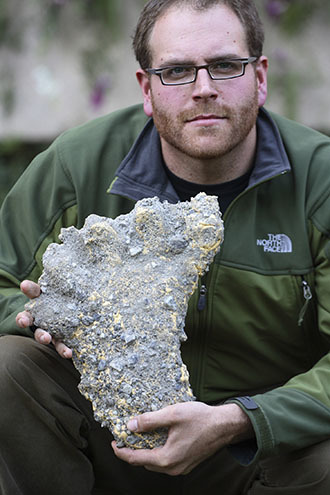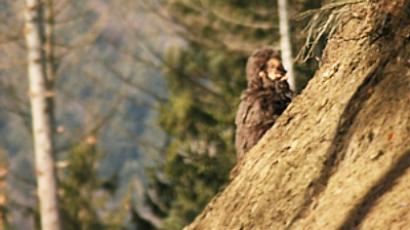You ain’t seen nothin’ Yeti! Scientists search for Bigfoot DNA

It’s a Yeti! It’s Bigfoot! No, it’s just your run-of-the-mill animal. So say the dozens of DNA samples linked to sightings of the mythical monsters, which were tested by an Oxford geneticist hopeful to find legends lurking in the mist.
Bryan Sykes, a professor of human genetics at Oxford University and an expert on ancient DNA, published the results of his yearlong effort to bring in and analyze samples of fur and hair purportedly left by Yetis, Abominable Snowmen and cryptid apes like Bigfoot or Sasquatch this week. The samples were collected by monster-hunters and fringe-science researchers known as cryptozoologists.
Sykes and co-author Michel Sartori, an entomologist at the Museum of Zoology in Lausanne, Switzerland, tested 36 samples from Bhutan, India, Indonesia, Nepal, Russia and the US. They used DNA sequencing to compare the samples to DNA from known animals from the GenBank database.
The majority of the mysterious fur fragments were from bears, but some were from a goat-like animal called a serow, a Malaysian tapir, a racoon, horses, porcupine, deer, sheep and even a human being (that one was in Texas). Then there were the two non-animals: a blade of grass and a strand of fiberglass. The paper, published in the Proceedings of the Royal Academy B, is the first study of Yetis published in a peer-reviewed journal.
"I wouldn't have done this as a young man, before I had an established reputation as a scientist," Sykes told the Guardian, calling cryptozoology "this often murky field." The geneticist is also publishing a book on Yetis this autumn.
Even without an appearance by an Abominable Snowman, the DNA proved interesting, even to those outside the cryptozoology field.

A reddish brown and a golden brown bear sample, from Bhutan and the Indian Himalayas, were both a genetic match for a 40,000-year-old jawbone from a polar bear that lived in the Norwegian Arctic. The sample from India is reportedly from an animal shot 40 years ago by an experienced hunter, according to the Guardian. That hunter said the animal’s behavior was very different from the brown bears he was used to.
"Polar bears have some quite distinct behaviour, including deliberately hunting human prey," Sykes said to the Guardian. "It would be very interesting to go and see if this is a behavioural pattern which has endured in the Himalayan bears."
The precise DNA matches suggest there could be a new or hybrid bear species out there, Sykes said. He’s organizing an expedition to the Himalayas to see if he can find the anomalous bear, according to NBC News.
Although Sasquatch proved elusive once again, the researchers haven’t given up hope. "Absence of evidence is not evidence of absence, and this survey cannot refute the existence of anomalous primates," the authors wrote.
For his part, Sykes still wants to find Bigfoot. "I don't think this finishes the Bigfoot myth at all," he told NBC News. "What it does do is show that there is a way for Bigfoot enthusiasts to go back out into the forest and get the real thing."
"The fact that none of these samples turned out to be [a Yeti] doesn't mean the next one won't," Sykes told the Associated Press.
But a hair sample alone may not be enough for skeptics.
"I would want visual or physical proof, like a body part, on top of the DNA evidence," Todd Disotell, a professor of anthropology at New York University, told AP. He warned Bigfoot enthusiasts not to make assumptions when they find weird things in the forest.
"Every mammal in the forest leaves hair and poop behind and that's what we've found," he said. "Just not the big guy himself."
Stuart Pimm, an ecologist at Duke University, said that there’s no such thing as a single Yeti.
"Those who believe in the Yeti, Bigfoot and the Loch Ness Monster need basic instruction in sex," Pimm wrote in an email to AP. "Each Yeti has two parents, four grandparents and so on."
"There should have been herds of [Yetis]," he wrote. "Where were they hiding?"
As they say, the truth is out there.














